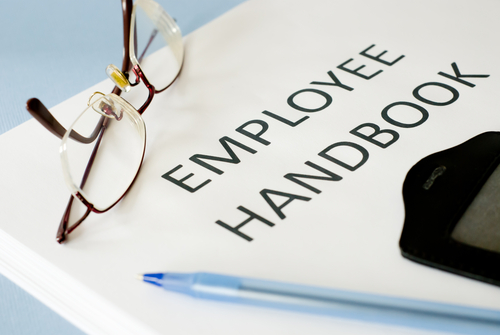Requiring employees to sign an acknowledgement stating that they’ve received, read, and understood the employee handbook may seem arduous, especially if it’s done every time there is an update to the handbook. But this task is more than a mere formality—it serves an important purpose for employers: it is documentation and evidence that the employees are aware of and understand the workplace rules. It is a key piece of documentation if there is ever a dispute or disciplinary issue.
 |
What Should the Employee Handbook Acknowledgment Include?
The acknowledgement should include:
- A confirmation that the employee has received, read, and understood the provisions of the handbook. Alternatively, it could state that the employee understands that it is his or her responsibility to read it, understand it, and comply with it—and to ask HR if there are any questions.
- A disclaimer, either within the handbook or within the signed acknowledgement, noting that the handbook does not constitute a contract of employment nor a legal document. Even better: include a notation that no one in the organization can modify the at-will status of employment or provide a contract or other agreement. (If there are exceptions, list them specifically.)
- A note that the policies are subject to change in the future.
- The version number and/or revision number and effective date of the handbook, along with a comment explaining that this version supersedes all previous versions.
- A note that this form will be kept on file, in the employee’s personnel records.
- A place for the employee to print his or her name, sign the document, and note the date it was signed.
As such, the best practice for employers is to:
- Have an employee signature on file for each updated version of the handbook
- Use version numbers and dates for all handbook updates and ensure the acknowledgements reflect these.
- Keep the handbook somewhere employees can access it at any time, such as on the organization’s intranet site.
- Consider keeping a separate acknowledgement for provisions of extreme importance, such as antiharassment policies or at-will employment acknowledgements.
What if an Employee Refuses to Sign?
Some readers may wonder: What happens if an employee refuses to sign the handbook acknowledgement? Can he or she remain employed? Is it prudent to allow that employee to stay? What action should be taken?
The first issue here is a legal one: Is an employer legally required to have employees sign the handbook acknowledgment? The answer is no. An employer isn’t even legally required to have a handbook, though it’s prudent to do so. As we mentioned above, the handbook acknowledgement is evidence that the employee knows or should know of the employer’s policies. It is a key piece of documentation if there is ever a dispute or disciplinary issue. As such, even though it’s not legally required, it could come up during future legal proceedings. This alone is enough of a reason for most employers to use these acknowledgements.
If it’s not a legal requirement, however, what recourse does an employer have if an employee refuses to sign? An employee may mistakenly think that a refusal means he or she does not have to comply with the company’s policies, which is simply not the case. Employers faced with this situation do have a few options:
- This could be treated as insubordination and could be punished accordingly, up to and including termination. This is, of course, the most extreme reaction. The employer would be well-served to try to determine the cause for the employee’s refusal to see if the concern can be addressed before taking this drastic of a step. Be sure if this step is considered that it is implemented consistently for all employees who refuse to sign.
- The employer can have a witness affirm that the employee received the information but refused to sign. The witness then signs the form. This has the benefit of being a form of proof of receipt, even if not as good as the employee’s signature.
- The employer can have the employee write on the form that he or she is refusing to sign it. This at least demonstrates that the employee was given the opportunity to sign it. It is not as good as a signature, but it still has the benefit of showing that the employee did receive the information.
About Bridget Miller:
Bridget Miller is a business consultant with a specialized MBA in International Economics and Management, which provides a unique perspective on business challenges. She’s been working in the corporate world for over 15 years, with experience across multiple diverse departments including HR, sales, marketing, IT, commercial development, and training.

